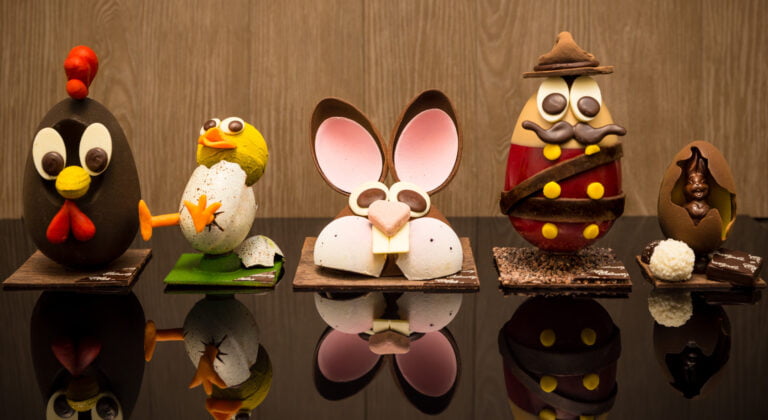Chocolate is one of the most beloved and iconic foodstuffs in the world, with a rich and fascinating history that dates back to ancient times. It has not only been a staple in the culinary world but has also played a significant role in art, literature, and cultural identity. In this article, we will explore the impact of chocolate on art, literature, and cultural identity and its evolution over time.
The Historical and Cultural Significance of Chocolate
The ancient Maya and Aztec civilizations first consumed chocolate as a bitter, frothy beverage made from ground cacao beans. They believed chocolate had mystical properties and used it in religious ceremonies and as a currency. When the Spanish conquered the Aztec Empire in the 16th century, they brought chocolate back to Europe and adapted it to the European palate by adding sugar and other flavorings.
Over time, chocolate became a popular luxury item, with many countries developing unique variations. Chocolate also played a significant role in the global slave trade, with European powers exploiting the labor of enslaved Africans to cultivate cacao beans.

The Intersection of Chocolate and Art
Chocolate has been a subject of art for centuries, with many famous artists depicting chocolate in their works. For example, Jean-Étienne Liotard’s 1744 portrait of a young woman drinking chocolate in Vienna is one of art’s most iconic images of chocolate. Similarly, Frida Kahlo’s painting “The Love Embrace of the Universe” features a bowl of chocolate, representing life’s nourishment and sustenance.
In addition to paintings, chocolate has also been the subject of sculpture and other forms of visual art. The annual Salon du Chocolat in Paris features elaborate chocolate sculptures, and chocolate art installations have been featured in museums and galleries worldwide.
The Relationship between Chocolate and Literature
Chocolate has also played a significant role in literature, with many famous writers referencing chocolate in their works. For example, in Roald Dahl’s beloved children’s book “Charlie and the Chocolate Factory,” chocolate is a central theme, with the story revolving around a magical chocolate factory. Similarly, the famous poet Pablo Neruda wrote a love poem dedicated to chocolate titled “Ode to chocolate.”
Moreover, many cultures have unique chocolate-based dishes and desserts, with recipes passed down through generations. These dishes and desserts have significantly shaped cultural identity and provided a sense of tradition and continuity.

Chocolate’s Role in Shaping Cultural Identity
Chocolate has significantly shaped cultural identity, particularly in countries where chocolate is a traditional food. For example, in Mexico, chocolate is a fundamental part of the country’s culinary heritage, with recipes and techniques passed down through generations. Similarly, in many African countries, chocolate has become a symbol of resistance against the legacy of colonialism and the exploitation of cacao workers.
In recent years, there has been a growing awareness of the ethical concerns surrounding the chocolate industry, including the exploitation of cacao workers and the environmental impact of cacao farming. Many consumers are now seeking ethical and sustainable chocolate products, which has led to the growth of the bean-to-bar chocolate movement.
Conclusion
Chocolate is much more than just a delicious treat. It has played a significant role in art, literature, and cultural identity, symbolizing power, luxury, and tradition. As the world becomes more aware of the ethical concerns surrounding the chocolate industry, it is essential to recognize the role that chocolate has played in shaping cultural identity and to support the efforts of those working to create a more ethical and sustainable chocolate industry.
FAQ’s
Q: What is the historical and cultural significance of chocolate?
A: Chocolate has been consumed by various civilizations throughout history, with the ancient Maya and Aztecs using it in religious ceremonies and as a form of currency. When the Spanish brought chocolate to Europe, it became a luxury item, and over time, different countries developed their unique variations. Chocolate has also played a significant role in the global slave trade.
Q: How has chocolate influenced art?
A: Chocolate has been a subject of art for centuries, with famous artists like Jean-Étienne Liotard and Frida Kahlo depicting chocolate in their works. Chocolate has also been the subject of sculpture and other forms of visual art, with annual events like the Salon du Chocolat in Paris featuring elaborate chocolate sculptures.
Q: What is the relationship between chocolate and literature?
A: Chocolate has played a significant role in literature, with many famous writers referencing chocolate in their works. For example, Roald Dahl’s “Charlie and the Chocolate Factory” and Pablo Neruda’s “Ode to Chocolate” are famous examples of chocolate’s influence on literature.
Q: How has chocolate shaped cultural identity?
A: Chocolate has significantly shaped cultural identity, particularly in countries where chocolate is a traditional food. In Mexico, for example, chocolate is a fundamental part of the country’s culinary heritage, with recipes and techniques passed down through generations. Chocolate has also become a symbol of resistance against the legacy of colonialism and the exploitation of cacao workers in many African countries.
Q: What are the ethical concerns surrounding the chocolate industry?
A: The chocolate industry has been criticized for exploiting cacao workers and the environmental impact of cacao farming. As a result, many consumers seek ethical and sustainable chocolate products, leading to the growth of the bean-to-bar chocolate movement.
